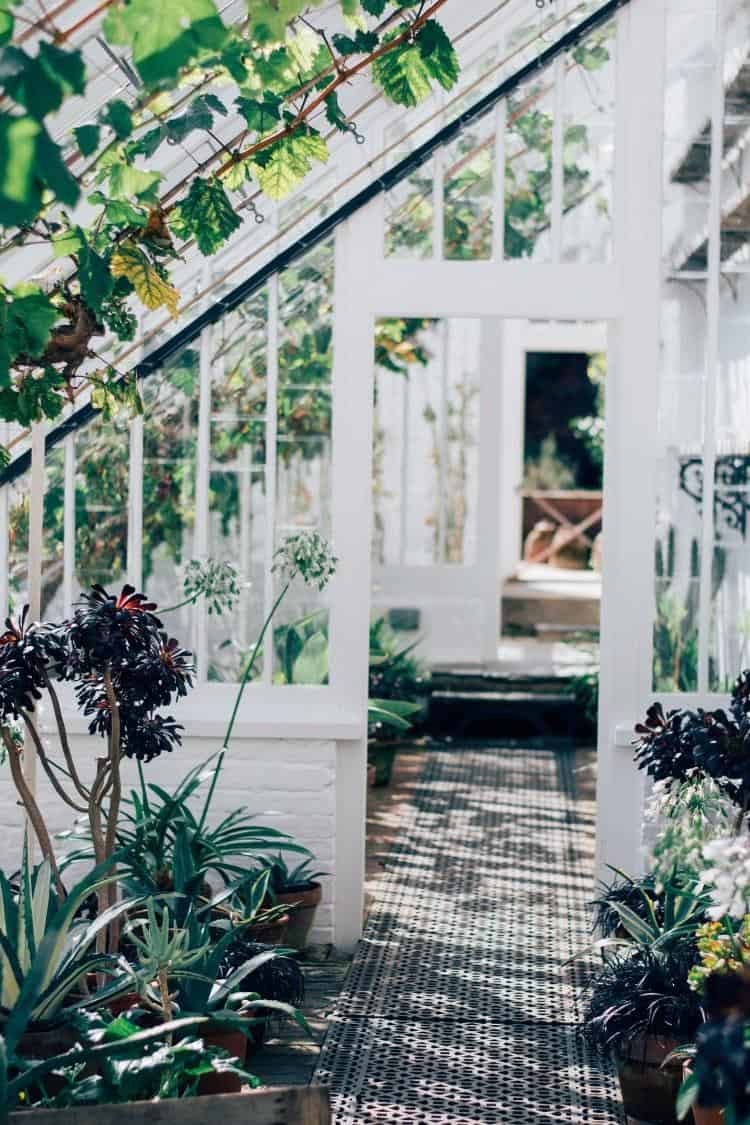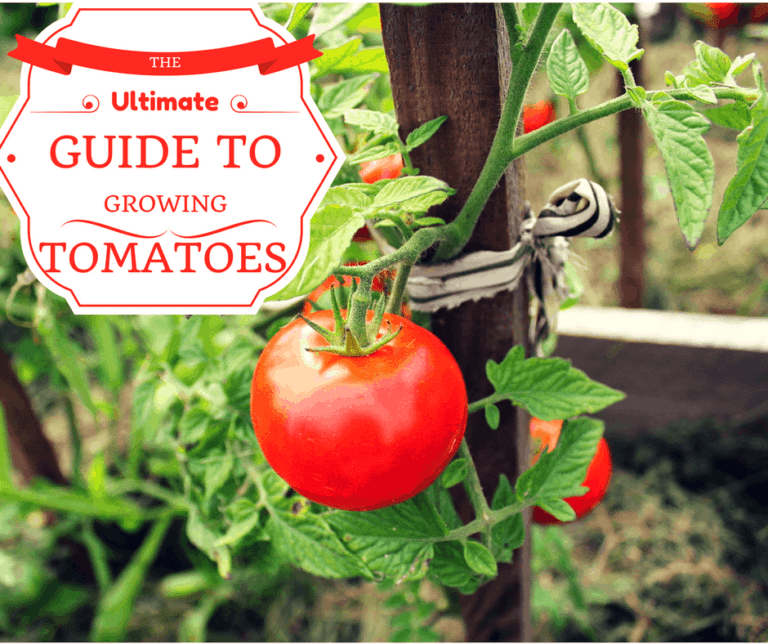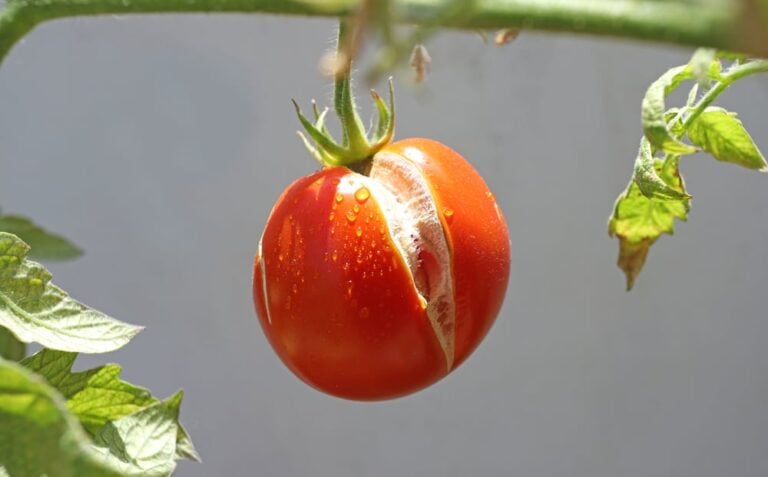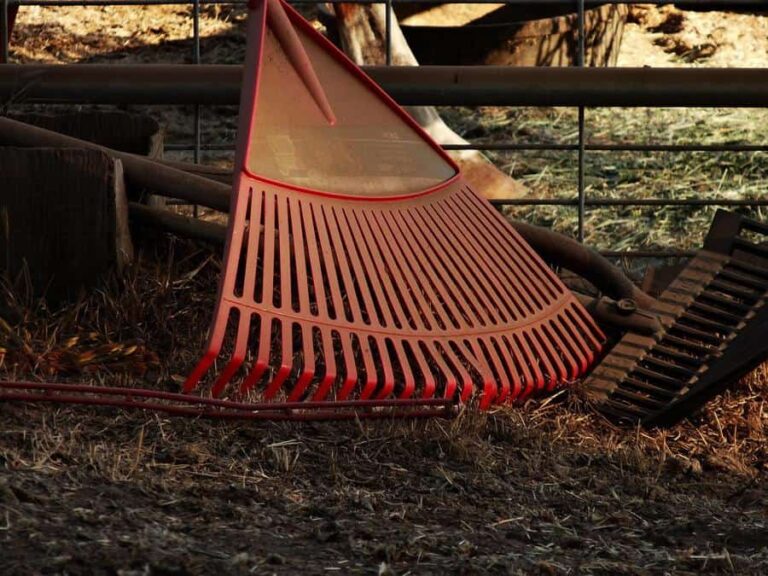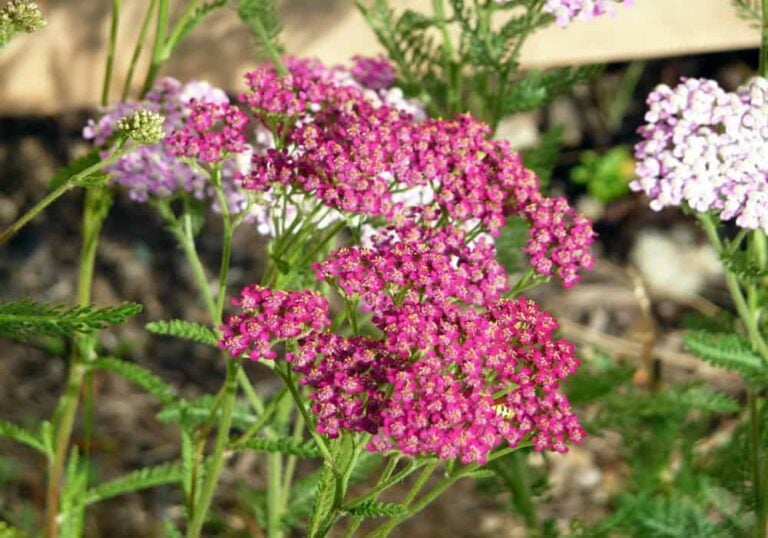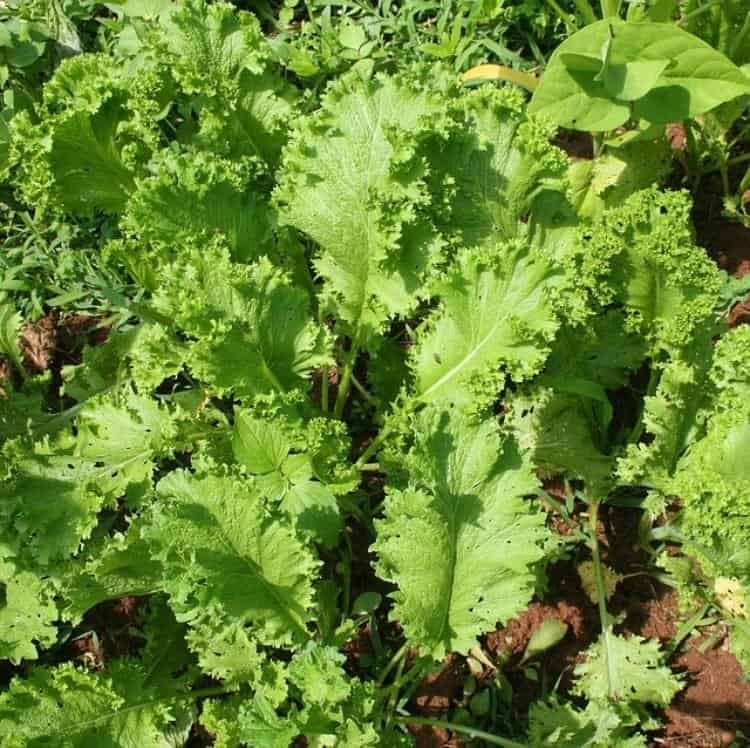How Far Apart To Plant Green Beans: 4 Steps for Green Bean Spacing
Green beans are among the first things that most people consider when building their home gardens. Indeed, there are a couple of reasons. First of all, even in some of the harshest environments, green beans can give you a good harvest. Second, you do not have to be a gardening expert to get the best results. Especially if you’re working with limited space, let’s learn how far apart to plant green beans.

In short, it is effortless to get started with green bean culture and provide the best care for the plant. However, there are exceptions, especially when we consider the aspect of spacing. Spacing is your answer to how apart to plant green beans.
When you think about it, spacing can determine how well the green beans plant can perform. It is an effective way to ensure that each green bean plant in your garden receives the right set of resources.
If you miss this part, you may have a partial harvest. That is, some of your harvests would be great, while others may not be up to your expectations. To prevent this, you should know how far apart to plant green beans plants before buying the seeds and getting started.
In this detailed guide, we have discussed the critical aspect of spacing in green beans farming.
Table of Contents
How Much Space Do Green Beans Need?
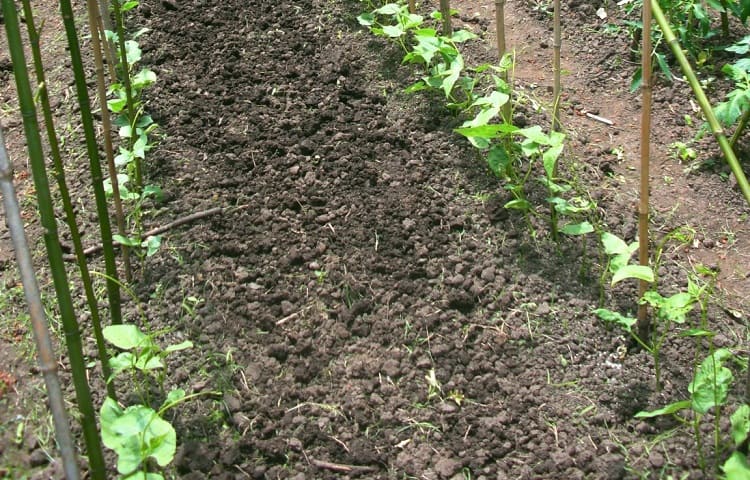
First, we will talk about the ideal space requirements of a green beans plant.
Before that, we must consider that you can grow green beans in two different ways: on the ground or in a pot. If you are growing the beans in a pot, you do not have to worry much about the spacing aspect.
Instead, you can make sure that you do not add too many green bean plants to a single container. However, if you plan to grow green beans on the ground, you have to care about the ideal space requirement. Here is what the experts and veterans of the matter say:
If you are dealing with bush bean seeds, each seed must be two inches apart. As for the rows, they must be 18 inches apart. However, you have to increase the area to 3 inches when it comes to pole bean seeds. It means the bush bean seeds need a space of four inches, while the pole bean seeds need around six inches.
There is no harm in giving a plant more space to grow. Therefore, things will stay wonderful if you provide a total of six inches of space for a pole bean seed.
As you can guess, the extra space will be used for a better network of roots and the collection of resources. The extra space would become helpful in some other instances as well.
For example, if you want a more controlled harvesting procedure and want to remove the problematic plants from a collection, you can do so without affecting the growth of other plants in the same row. But the limitations of a close-planted collection of green beans are more fearsome. Even so, these spacing requirements are much less that a plant like a potato.
What Happens If You Plant Beans Too Close Together?
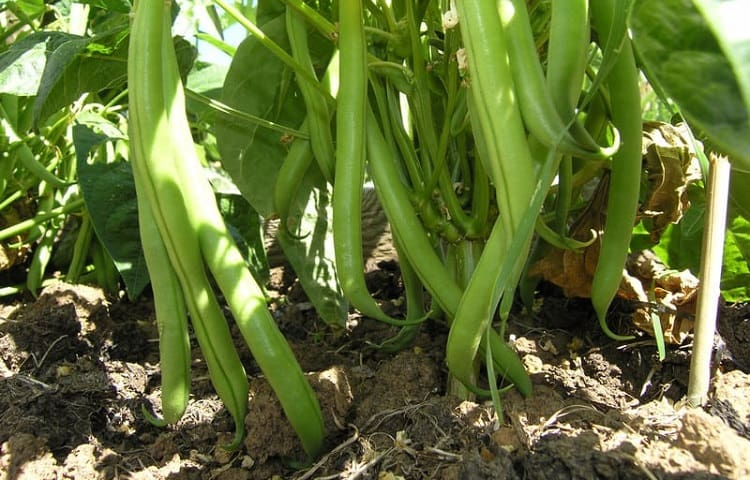
Let us say that you ignore what the experts say. It means you would plant the green bean seeds too close to each other.
For instance, you may keep a distance of less than one inch between each plant. As you can guess, the process will impact how the plant grows. Given below are some of the issues you may face.
Please keep in mind that the following matters would happen to almost every plant out there. They are not exclusive to green beans.
- When you plant beans too close together, the plants will enter a competition to absorb nutrients and water from the soil. If all the bean seeds you plant are equally powerful, this would not be a problem. But they are not. As a result, the green bean plants will start fighting with each other, leaving some of them dried and forgotten. In the end, a close-connected collection of green bean plants will cause some of those plants to fruit as you expect them to.
- Because of the potential lack of nutrients, the plants may not flower as well. However, the amount of sunlight a plant can get will also impact this number. For instance, some varieties of green beans need a constant supply of moisture to grow and flower. If the competing plants take up all moisture from the ground, things will become difficult for sure. The problem is that you may not know about the issue until you see a sub-par fruit or flower from the plant.
- Disease control also becomes challenging when you plant bean seeds too close together. Since these plants may not have their territories, it becomes easy for diseases and pests to move around for the most part. In the end, when the stems and roots touch a lot, you can expect the conditions to spread to the entire garden in a matter of days or hours. However, if you leave ample space between each plant, you can contain many diseases within a plant’s area.
- Last but not least, harvesting also becomes an easy task when there is enough space between two given green bean plants. As you can guess, not all plants may grow simultaneously, even when you provide an equal amount of water, sunlight, and fertilizers. It means you may have to take the harvest from a plant earlier than another. In these situations, you can reduce the mess and stop affecting the other plants if they have a reasonable distance from each other.
As you can see, planting green bean seeds so close to each other does not help you at all. You may think that you are saving many real estate, but you are not.
Finally, you are looking for a good harvest of green beans, correct? It is always best to leave as much space as you can between two green bean plants from that perspective. You may even be able to disregard the number of plants and get a better harvest.
Step by Step Guide for How Far Apart to Plant Green Beans
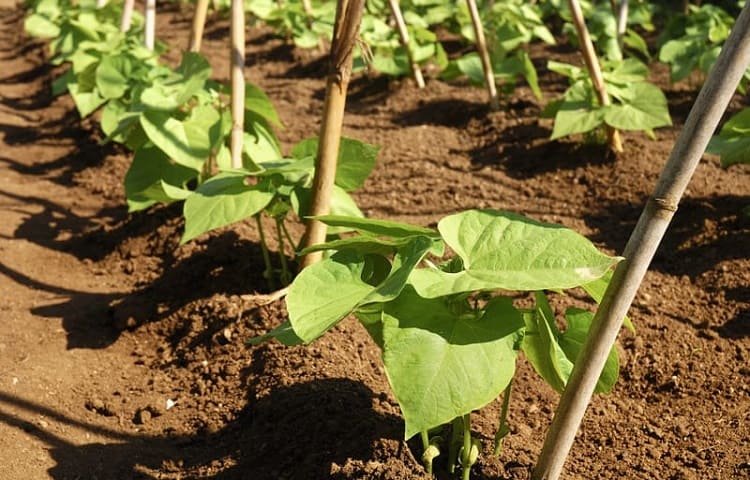
Below are the steps you can follow to space your green bean seeds perfectly.
- Ensure that you have optimized the planting environment for temperature, soil quality, moisture, acidic value, etc.
- Now, if you are dealing with bush beans, you have to dig a hole that is 1 inch deep. Each of these 1-inch-deep holes must be 2 inches apart from each other. Therefore, each hole will have four inches of space around it.
- If you have pole beans, you have to be more considerate. While the hole must remain 1-inch deep, you have to dedicate more space between two holes. Each of these 1-inch-deep holes must be 3 inches apart from each other. So, we are talking about six inches of space around a hole.
- Now, you can plant the bean seeds and set up the other contraptions for growth. For instance, you can set up a tepee that would help the wines grow properly. You may have to train the wines to depend on the tepee when the plant grows up anyway.
Following these steps will ensure that each green bean seed in your garden has a sufficient amount of space to grow.
Even in the worst-case scenario where diseases start to appear, it will be easy for you to mark the area and stay extra careful in the next harvest. Now, that brings us to the next question.
Can You Plant A Second Crop of Green Beans?
Yes, it is possible to plant a second crop of green beans. However, you have to take care of some aspects as you do that.
Some of the core ideas for timing the second crop of green beans are as follows.
- It would help if you chose various green beans to give you the results in around 45 days. This way, you can expect the first crop to be over and use the time to plant the second crop.
- You cannot predict the number of nutrients the first crop has used up so far. Therefore, even if the soil looks fresh enough, you should do a second supply of fertilizers and moisture.
- As it goes without saying, you should provide enough water to the soil before planting the second crop. It becomes imperative when you are planting the second crop during summer.
- If you think the environment is hotter, you should provide a corresponding amount of water to green bean plants. If you did not know, beans would not germinate if the weather is hot. You can avoid this scenario by increasing the frequency of watering.
- Last but not least, you should try other varieties of green beans if the current one does not give you the desired output. In that sense, you can consider the second crop as an experimental phase.
Frequently Asked Questions
What is the recommended spacing for planting green beans?
The recommended spacing for planting green beans depends on the variety of green beans you are planting. Generally, bush beans should be spaced 4-6 inches apart in rows that are 18-24 inches apart, while pole beans should be spaced 6-8 inches apart in rows that are 30-36 inches apart.
Can I plant green beans closer together to increase my yield?
Planting green beans closer together than the recommended spacing can lead to overcrowding and stunted growth. It is better to follow the recommended spacing for optimal growth and yield.
Should I plant green beans in full sun or partial shade?
Green beans should be planted in full sun, which means at least 6 hours of direct sunlight per day. Partial shade can lead to slower growth and lower yields.
What is the best time to plant green beans?
Green beans should be planted after the last frost in the spring and before the first frost in the fall. In most regions, this means planting green beans in late spring or early summer.
How often should I water my green beans?
Green beans require consistent moisture, so it is important to water them regularly. Aim to water them deeply once or twice a week, depending on weather conditions.
How do I know when my green beans are ready to harvest?
Green beans are ready to harvest when they are about the size of a pencil and snap easily when bent. Be sure to harvest them regularly to encourage continued production.

